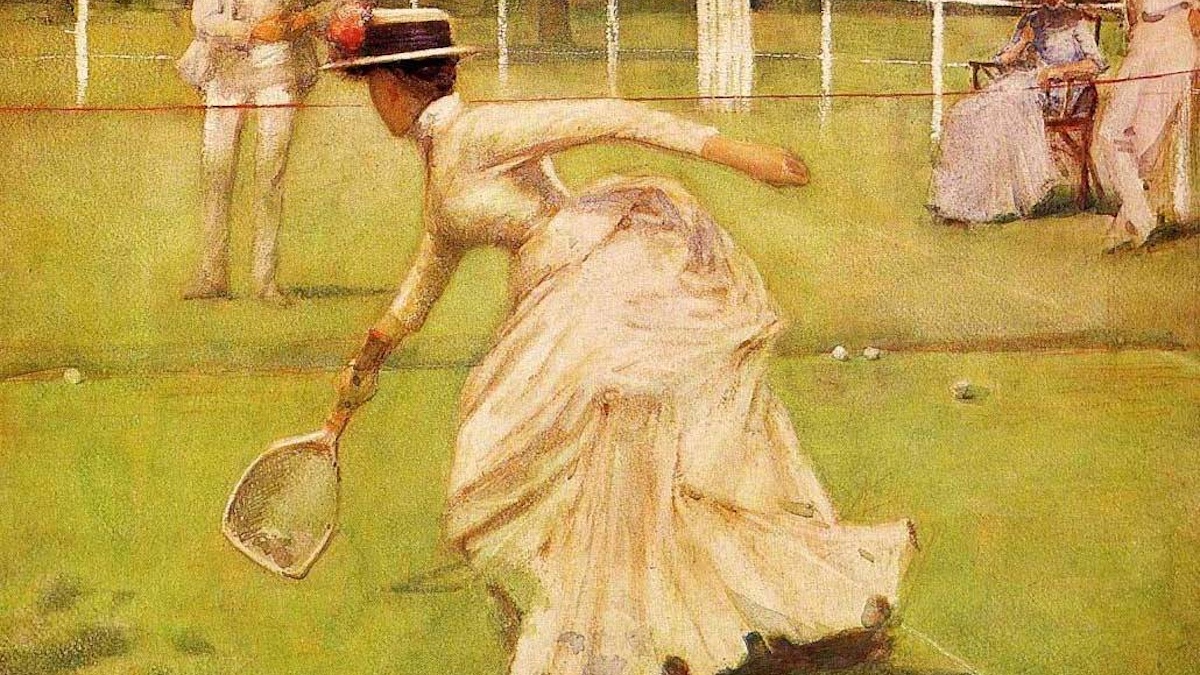American rugby star Ilona Maher won the bronze medal a few weeks ago at the Summer Olympic Games in Paris.
Maher, who boasts an impressive social media following (3 million on Instagram, 2.2 million on TikTok), has enjoyed robust public attention and support as a result. But, like everything that reaches the news cycle, Maher’s image was quickly ensnared in a culture war debate. Many commenters mocked her, saying she “looks like a man,” and that she is too big to be a woman. Others have attempted to claim her as “gender non-conforming.”
The discourse around Maher illustrates how both sides have lost touch with reality, tacitly endorsing one another’s misapprehension that womanhood is a matter of appearance, rather than biological fact.
Divorcing Image from Reality: The World of Pure Simulacra
The age of mass media is perhaps better described as the age of the secondary and tertiary image. This notion was pioneered by philosopher Jean Baudrillard in Simulacra and Simulation (1981). He describes a gradually unfolding, progressive imposition of representation as a betrayal of base reality.
To a certain extent, this has always been the case; no two people see or describe the same instance from the same vantage, and as the telephone game reveals, stories change shape as they are retold. Baudrillard himself speaks of “the evanescence of its object in its very apprehension.” Today, however, the sheer proliferation of images at our fingertips, as well as the mass abundance of technologies that allow us to capture, manipulate, and share them, deepen our isolation and more easily divorce human beings from the real.
Baudrillard illustrates the process in four steps. These are: 1. the faithful copy, 2. the perversion of reality, 3. the absence of a profound reality, where the sign pretends to be a faithful copy, but it is a copy with no original, and 4. pure simulacrum, in which the simulacrum has no relationship to any reality whatsoever. He writes,
In the first case, the image is a good appearance—representation is of the sacramental order. In the second, it is an evil appearance—it is of the order of maleficence. In the third, it plays at being an appearance—it is of the order of sorcery. In the fourth, it is no longer of the order of appearances, but of simulation.
Having been born hundreds of years after the dawn of photography, Baudrillard concedes that modern people live more in the realm of hyperreality than immediate experience. At the very least, most of the images we consume happen on the secondary, tertiary, or final level of Baudrillard’s spectrum. There is less friction in imbibing the image than the reality, which indulges the human tendency to seek pleasure. But this ease comes at a price: over time, Baudrillard suggests, forsaking the realm of the real engenders listlessness. Representations of representations denature the original object of its meaning while denaturing the observer of energy and creativity.
Reality loses its meaning by becoming too open to interpretation. Human beings lose their ability to discern. Lies are not just more believable in the realm of the hyperreal; they are the air we breathe.
Forgetting the Female Body
Nothing escapes the industry of imagery, least of all the female body. An overabundance of image and hyperreal manipulation has caused us to forget its basic purposes and potentialities. This process of forgetting closely resembles Baudrillard’s typology.
Women have been subjected to intense attention and “interpretation” in the age of the mass image. This story begins long before the 2024 Olympic games, before even the 1924 Olympic games. Indeed, Baudrillard sees the process as cyclical and constant.
One particularly potent example of the perversion of reality through image is the “heroin-chic” trend of the 1990s. During this time in the media, adult female bodies were scrubbed of natural indicators of fertility. En masse, girls who grew up imbibing the heroin-chic representation of womanhood were driven insane by the delta between their real bodies and the starved and photoshopped, and sometimes, yes, naturally, uniquely thin bodies represented on the screen.
Though the “body positivity” movement sought to subvert an image that had already denatured reality, rather than return to an image closer resembling reality (in function and purpose), activists imposed tertiary representations as ideal, from morbid obesity to gender nonconformity. This step neatly coincides with Baudrillard’s model: step three, the absence of a profound reality. The absent reality, in this case, is that bodies have a purpose. If the purpose of the human body is as a vehicle for human excellence, as it has been broadly understood since antiquity, “body positivity” in the popular sense conceals the profound reality of telos.
We can see how heroin chic paved the way for this by first disconnecting the idea of the female form from fertility and health in general. In doing this, it also neatly paved the way for Baudrillard’s fourth step, pure simulacrum, where the image has no relation to reality whatsoever. By the time transgenderism was popularized, we’d been desensitized to the idea that there is no such thing as a natural purpose for a human body, that bodies are infinitely malleable to desires, and that body and soul have little if anything to do with one another.
Excellence Over Appearance
Ilona Maher, as an elite athlete with a truly athletic flair, responded to her detractors with an insightful TikTok video. “As you begin to watch the Olympics this week,” she said, “I want you to take note of all the different kinds of body types here… from the smallest gymnast to the tallest rugby player, all are capable of magnificence.” Maher quietly subverts both the faux-equality of the body positivity movement and shallow gender essentialism by prizing excellence over appearance.
See what magnificence you could accomplish. The greatness is beyond the image.
How to break through the matrix? Baudrillard warns that defining oneself in opposition to one’s ideological enemy only solidifies both sides in “a vicious curvature of a political space that is henceforth magnetized, circularized, reversibilized from the right to the left.” He is skeptical of the “wish to restore the truth beneath the simulacrum,” which he sees as a “false problem.”
This is where Baudrillard loses me. It strikes me as dangerously nihilistic to reject the possibility of meaning, authenticity, or sincere social dialogue. Still, we would all do well to heed his warning against partaking in ideological games.
I find Ilona Maher refreshing and authentic precisely because she is not ideological. She embraces excellence and physical prowess for its own sake. Her bigness is a function of her excellence, which is primary. Her visage is not based on or created with the purpose of the subversion of the gender essentialists or the transgender ideologues, but she subverts them nonetheless, simply by being real, excellent, and unique without pretense. I hope she simply continues on this way, without branding herself into oblivion.
I’ve written before on the athletic mindset—supported by an actual athletic practice—and its power to help us acquire virtue, making us better at being human. Sun and steel have a way of bringing men and women alike back down to earth, piercing through the ghosts of ghosts of ideas of identities on which we tend to fixate, especially online. The greatness of human potential, how far we can reach in the bodies God gave us, is too often lost in the disembodied nonsense implicit to postmodern communication.
The Olympics may have its issues, but the athletes remind us of our own capacity for human excellence. This is a good reminder indeed.



